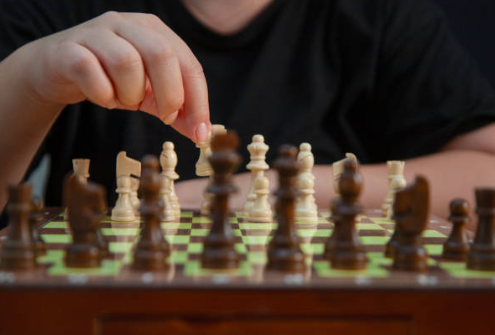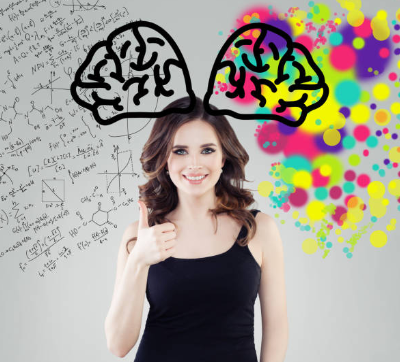As the global population ages, more families and caregivers are seeking effective ways to support loved ones with memory loss, Alzheimer’s disease, or other forms of dementia. Memory care activities offer far more than just recreation—they are powerful tools that stimulate the brain, reduce anxiety, and enhance emotional well-being.
Engaging seniors in thoughtfully designed memory care programs can improve cognitive function, foster connection, and slow the progression of memory-related conditions. Whether through remembrance therapy, sensory stimulation, or brain games for seniors, these activities build neural pathways and create moments of joy and recognition—even for those in advanced stages of memory decline.

In this guide, we’ll explore a variety of memory care activities for Alzheimer’s, dementia, and other cognitive impairments—each tailored to spark joy, restore confidence, and preserve dignity. You’ll also learn how to implement these activities in care settings or at home, plus discover keyword-rich strategies for promoting your services if you’re in the senior care industry.
If you’re a caregiver, activity director, or memory care provider, this comprehensive guide is your roadmap to creating impactful and meaningful moments—one activity at a time.
Why Memory Care Activities Matter
- Evidence‑based benefits: Cognitive stimulation slows memory decline.
- Emotional & social uplift: Improves mood, reduces isolation and anxiety.
- Personalized brain care: Builds neural connections through meaningful engagement, supporting brain health .
Category-Wise Memory Care Activities to Support Cognitive Health
Designing activities that match a person’s cognitive level, interests, and abilities is critical to the success of any memory care program. Activities that are too simple may not stimulate, while overly complex tasks may cause frustration. That’s why a category-wise approach to memory care activities is not only strategic but essential for individualized care.
Below, we’ve outlined the most effective categories of memory care activities for Alzheimer’s and dementia patients, including hands-on examples, recommended materials, and cognitive benefits. Whether in a professional care setting or a home environment, these ideas are designed to enhance engagement, improve memory retention, and promote emotional well-being.
1. Reminiscence Therapy Activities

Reminiscence therapy is a proven method of connecting individuals with dementia to their long-term memories by revisiting meaningful experiences from the past. These activities are emotionally enriching and can help reduce feelings of confusion or agitation.
Activity Ideas:
- Life Story Scrapbooks: Use old photographs, memorabilia, and written stories to build a personal memory book. This supports identity and long-term recall.
- Era Music Listening Sessions: Play music from the individual’s youth or early adulthood. Music has a powerful ability to activate dormant memories.
- “I Remember When” Circles: In group settings, take turns sharing memories about topics like school days, holidays, or family traditions.
- TV Show & Movie Flashbacks: Watch classic shows or films from the 40s, 50s, or 60s and discuss scenes afterward.
- Object-Based Memory Boxes: Fill boxes with items like rotary phones, typewriters, perfume bottles, or other nostalgic tools to spark conversations.
Benefits:
- Boosts memory recall
- Enhances mood and reduces depression
- Encourages communication and storytelling
- Supports emotional well-being
2. Sensory Stimulation & Multisensory Activities

As dementia progresses, sensory processing changes. Multisensory memory care exercises are designed to provide soothing or stimulating input that activates the brain in nonverbal, intuitive ways.
Activity Ideas:
- Aromatherapy & Scent Guessing: Use essential oils like lavender, peppermint, or citrus. Have participants identify the scents.
- Tactile Bins (Touch Therapy): Fill bins with rice, marbles, fabrics, or sand to stimulate touch and hand movement.
- Nature Walk & Sensory Scavenger Hunt: Identify sights, sounds, and textures found in a garden or park.
- Cooking & Baking: Encourage simple food preparation like kneading dough, snapping green beans, or stirring batter—great for taste, touch, and smell.
- Visual Light Displays: Use projectors or bubble tubes to provide calming visual input.
Benefits:
- Promotes calmness and reduces anxiety
- Stimulates sensory brain regions
- Encourages curiosity and attention
- Helpful for nonverbal individuals or those in advanced stages
3. Art, Music & Creative Expression Activities

Creative activities like painting or singing are ideal for brain stimulation in seniors, especially when verbal communication becomes difficult. These expressive outlets allow individuals to connect, communicate, and experience joy.
Activity Ideas:
- Paint-by-Numbers or Freestyle Painting: Use large brushes and bright colors to create visual art.
- Group Mural Project: Collaborate on a wall-sized canvas representing seasons or nature scenes.
- Music Therapy with Instruments: Use tambourines, maracas, or hand drums during music sessions.
- Sing-Alongs with Lyric Books: Familiar tunes are easier to remember and sing.
- Clay Sculpting or Collage Making: Great for fine motor skills and self-expression.
Benefits:
- Encourages creativity and pride
- Boosts serotonin levels
- Improves fine motor skills
- Offers nonverbal communication channels
4. Cognitive Brain Games & Memory Challenges

Structured mental activities like puzzles or sorting tasks can keep the brain engaged and promote neuroplasticity. These brain games for seniors with memory loss are designed to challenge gently without overwhelming.
Activity Ideas:
- Matching Games (Photos or Words): Match famous landmarks, animals, or personal photos.
- Sequencing Cards: Put events in order, such as brushing teeth or making a sandwich.
- Word Association or Finish-the-Phrase Games: Start phrases like “The early bird…” and encourage the person to complete them.
- Jigsaw Puzzles (Large-Piece): Ideal for visual and spatial reasoning.
- Crosswords or Picture Bingo: Customize by using familiar images or names.
Benefits:
- Strengthens short-term memory
- Encourages logic and reasoning
- Supports focus and attention
- Reduces risk of further decline
5. Physical Movement & Exercise-Based Activities

Regular movement improves not only physical health but also brain function. Exercises that involve rhythm, balance, and coordination are particularly beneficial in memory care.
Activity Ideas:
- Chair Yoga or Seated Tai Chi: Gentle, flowing movements that improve balance and focus.
- Dance to Music from Their Youth: Play 1950s–1970s music and encourage movement, even if seated.
- Parachute Games: Group fun with lightweight fabric to promote coordination and teamwork.
- Balloon Volleyball or Beanbag Toss: Low-impact games that promote reaction time.
- Guided Nature Walks: Light walking improves blood flow to the brain.
Benefits:
- Improves circulation and coordination
- Reduces restlessness and anxiety
- Stimulates dopamine and endorphins
- Helps regulate sleep cycles
6. Social, Group & Community-Based Activities

Social engagement is one of the most underutilized yet highly effective tools in dementia and Alzheimer’s care. Group activities help prevent isolation, improve mood, and provide a sense of belonging.
Activity Ideas:
- Themed Social Hours: Host tea parties, “memory cafes,” or decade-themed dress-up days.
- Pet Therapy Visits: Animals have been shown to reduce agitation and promote social interaction.
- Volunteer Visits or Intergenerational Activities: Invite school children or community members for shared storytelling or reading.
- Holiday Celebrations & Traditions: Include familiar decorations, music, and food from the individual’s cultural background.
- Spiritual & Faith-Based Services: Familiar prayers or hymns can be deeply comforting.
Benefits:
- Reduces loneliness and isolation
- Enhances emotional connection
- Improves self-worth and social functioning
- Sparks conversation and laughter
Bonus: Tips for Tailoring Memory Care Activities
- Know their life history: Use past occupations, hobbies, and cultural heritage to select meaningful activities.
- Observe reactions: Watch body language and facial expressions to gauge enjoyment or frustration.
- Be flexible: Adapt difficulty, simplify steps, or change the pace as needed.
- Use positive reinforcement: Celebrate participation and effort over results.
Sample Integration Table for Memory Care Activities
| Category | Activity Example | Cognitive Level | Physical Requirement | Materials Needed | Duration | Benefits |
|---|---|---|---|---|---|---|
| Reminiscence Therapy | Life Story Scrapbooking | Mild to Moderate | Low | Photos, glue, scrapbook | 45–60 mins | Boosts long-term memory, promotes storytelling |
| Sensory Stimulation | Scent Guessing with Essential Oils | All Levels | Minimal | Lavender, peppermint, cotton pads | 20–30 mins | Calms anxiety, stimulates olfactory memory |
| Creative Expression | Paint-by-Numbers | Mild to Moderate | Seated Activity | Paint sets, brushes, canvas | 30–45 mins | Encourages creativity, improves fine motor skills |
| Brain Games | Finish-the-Phrase | Mild to Moderate | None | Printed phrase prompts | 20 mins | Strengthens verbal memory, encourages engagement |
| Physical Movement | Chair Yoga | All Levels | Seated | Yoga video or instructor | 30 mins | Enhances flexibility, improves mood |
| Social Interaction | Themed Tea Party | Mild | Low (Seated) | Tea, music, decorations | 60 mins | Reduces isolation, improves mood |
| Music Therapy | Sing-Along with Familiar Songs | Mild to Moderate | Seated | Lyrics sheets, speaker | 30 mins | Triggers memory recall, boosts serotonin |
| Nature Activity | Sensory Garden Walk | Moderate | Light Walking | Garden path, nature items | 30–40 mins | Stimulates all senses, promotes calm |
| Tactile Therapy | Textured Sensory Box | Moderate to Severe | Minimal | Box with fabrics, rice, beads | 20 mins | Stimulates touch, calming effect |
| Cognitive Puzzle | Picture Matching Game | Mild | Seated | Custom cards with familiar images | 25–30 mins | Enhances attention, improves memory recall |
How to Use This Table:
- Customize per individual: Match the activity with the resident’s current abilities and preferences.
- Rotate weekly: Avoid repetition fatigue by rotating categories across different days.
- Monitor outcomes: Note which activities lead to the most engagement or positive reactions.
- Track participation: Useful for documenting therapeutic outcomes or family communication.
Frequently Asked Questions (FAQs)
1. What are memory care activities?
Memory care activities are structured tasks designed to stimulate the brain, improve mood, and support daily functioning in individuals with dementia, Alzheimer’s, or other cognitive impairments.
2. How do brain games help seniors with memory loss?
Brain games improve attention, problem-solving, and memory recall by keeping the brain active and encouraging cognitive engagement.
3. Can memory care activities slow down dementia?
While they can’t cure dementia, engaging in consistent cognitive and sensory activities can help slow decline and improve quality of life.
4. What are the best activities for late-stage dementia?
Simple sensory activities like music listening, touch therapy, aromatherapy, and visual stimulation work best for individuals in advanced stages.
5. How often should memory care activities be done?
Ideally, memory care activities should be done daily or at least several times a week to maintain consistency and therapeutic benefit.
Conclusion
Memory care is more than just a support system—it’s a lifeline to dignity, joy, and connection. By incorporating thoughtfully chosen memory care activities, we can help individuals with Alzheimer’s, dementia, or cognitive decline maintain their sense of identity, purpose, and emotional well-being.
Whether it’s through a nostalgic photo album, a soothing scent, or a favorite song from their youth, every activity becomes a bridge to moments of recognition and happiness. From brain games for seniors to sensory and social engagement, these activities are essential components of holistic dementia care.
As caregivers, family members, or professionals in memory care facilities, your creativity and compassion make a profound difference. Keep activities consistent, personalized, and purposeful—and always celebrate the small wins.
Ready to Make a Difference?
Start building your activity calendar today, or share this guide with someone navigating memory care. The smallest moment can leave the biggest impact.
More Articles About the Brain
Ultimate List of Words for Memory Test
How to Focus Better in School: Effective Study Strategies for Students
Left and Right Brain Exercises to Boost Creativity, Focus & Performance
How to Concentrate Better While Studying
yoga poses to reduce stressanas for Calm & Clarity
Mastering DBT Skills for Depression: Your Guide to Mindfulness, Emotional Regulation & Daily Tools
Nursing Home Activities That Boost Well‑Being & Engagement



